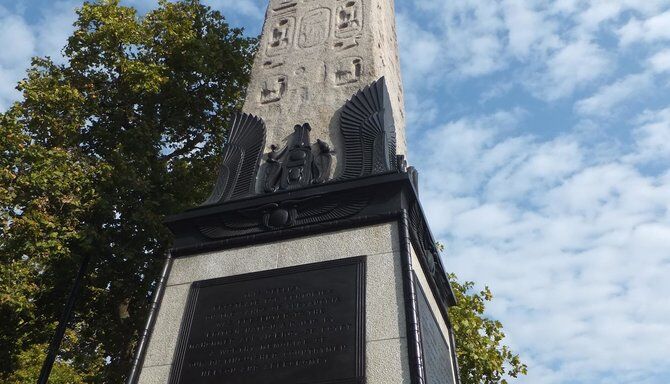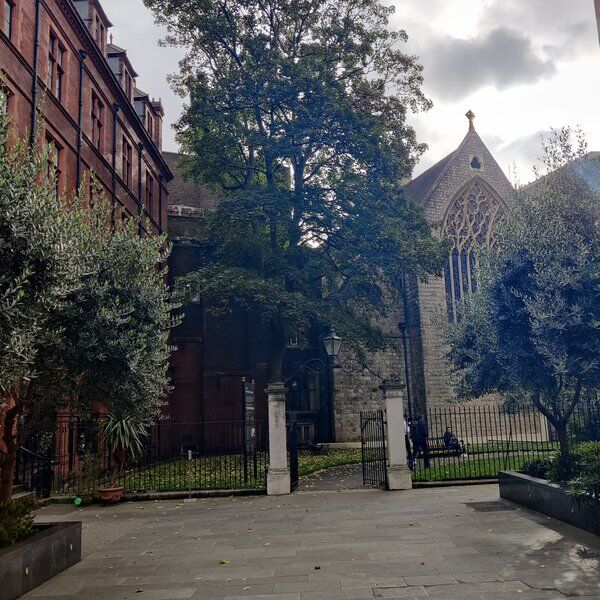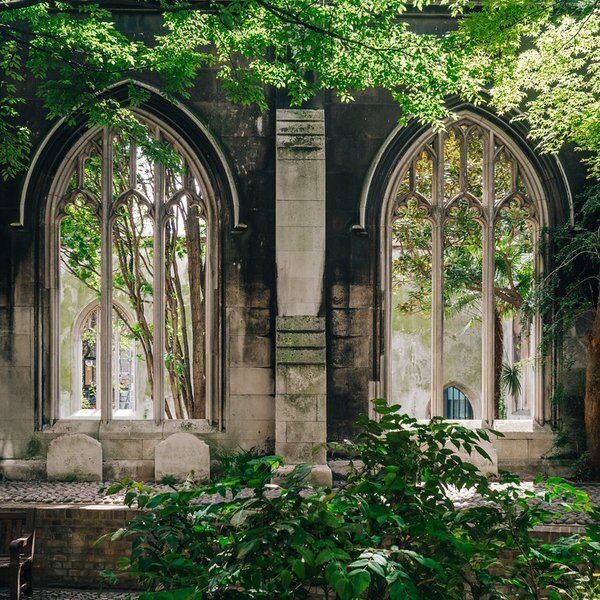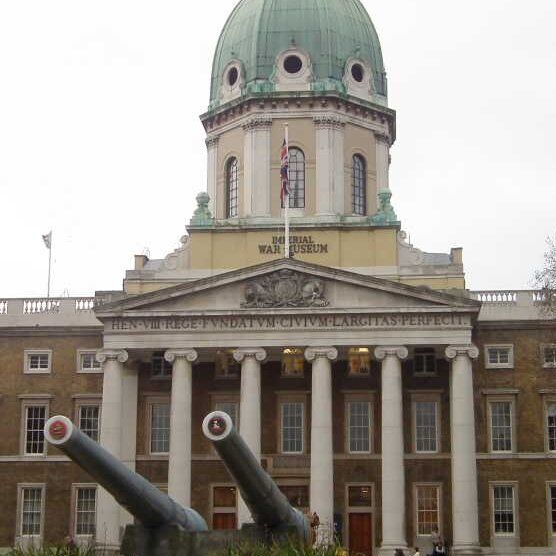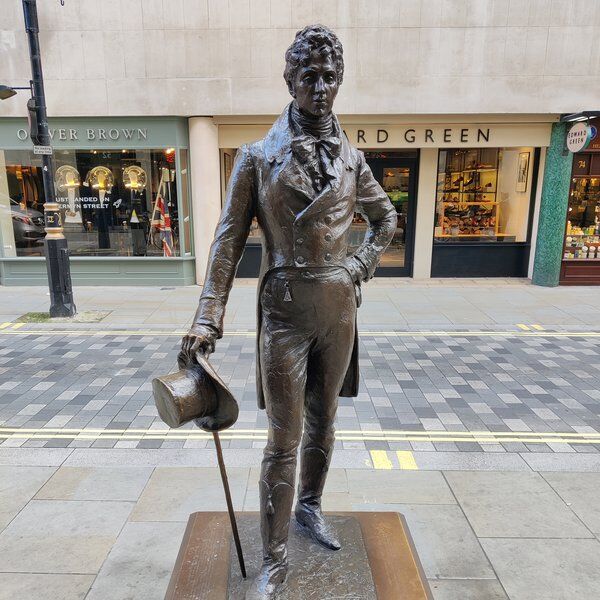Discover Cleopatra’s Needle London
When you think of ancient Egyptian monuments, you probably imagine them basking under the hot sun, not battling London’s drizzle on the banks of the River Thames. But that’s exactly where you’ll find Cleopatra’s Needle London, which is actually one of two matching 3,500 year old obelisks.
In ancient Egypt, obelisks were all the rage. They stood like stone sunbeams at temple entrances, celebrating pharaohs and paying homage to the gods. And while there are now Cleopatra’s Needles in London and New York, (and a third in Paris), none of them were originally built by Cleopatra herself. In fact, the one in London predates her by over a thousand years!
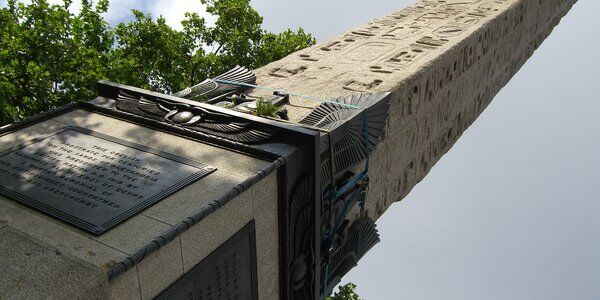
The Obelisk’s Origins in Heliopolis
The story of Cleopatra’s Needle London begins around 1450 BC, during the reign of Thutmose III, one of ancient Egypt’s most successful warrior pharaohs. To commemorate his 30th year on the throne, he commissioned two grand obelisks to be carved from single blocks of red granite.
The granite came from Aswan, near the first cataract of the Nile. That’s more than 500 miles from Heliopolis, the city where the obelisks were originally erected. Quite how they managed to transport 200-ton monoliths that far without the benefit of trucks, cranes or even roads is still a bit of an ancient engineering mystery—but the Nile definitely played its part.
Once they arrived in Heliopolis, the obelisks were raised outside a temple to the sun god Ra. There, each one stood proudly on either side of the temple’s gateway, their faces etched with hieroglyphs singing the praises of Thutmose III.
Ramesses II Adds His Own Spin
Fast forward two hundred years and another big name in Egyptian history—Ramesses II (aka Ramesses the Great)—decided to piggyback on Thutmose’s PR campaign. He added his own inscriptions flanking the originals, bragging about his military victories in two neatly carved columns down each side of the obelisks.
These grand stone pillars stood in Heliopolis for more than a millennium, standing guard as dynasties rose and fell, until a shift in power changed everything.
Rome Arrives and the Needles Move Again
In 12 BC, the Roman Empire, now running the Egyptian show, decided to give the obelisks a new home. They were hauled all the way to Alexandria, a Mediterranean city founded by Alexander the Great and famously ruled by Cleopatra VII during the final days of Egypt’s independence.
There, they were planted outside the Caesareum—a temple originally built by Cleopatra herself, either in honour of Julius Caesar or Mark Antony (both were lovers, both had statues—we’ll never know for sure). While Cleopatra didn’t build the obelisks, the move linked them to her legacy and gave them the nickname that would stick for centuries: Cleopatra’s Needles.
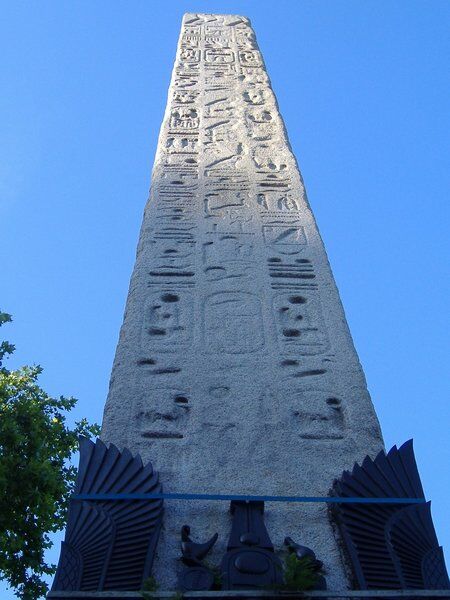
Discovering the Needles in Alexandria
For almost 2,000 years, the obelisks stood (or lay) in Alexandria, witnessing the rise and fall of empires. By the Middle Ages, one of the two 69-foot, 224-ton granite obelisks had toppled, likely during the 1303 earthquake that also damaged the legendary Lighthouse of Alexandria. The fallen one— which would later become Cleopatra’s Needle London—was partially buried by sand, a twist of fate that preserved its carvings from centuries of wind and storm erosion.
Thanks to Napoleon’s invasion of Egypt in 1798, a whole battalion of scholars, scientists, artists, and overexcited souvenir-hunters had swarmed into the land of pyramids and papyrus. Their findings lit a spark in the Western imagination, and suddenly everyone wanted a slice of ancient Egypt in their drawing room—or their town square.
Europe had well and truly fallen into the throes of "Egyptomania"—a feverish obsession with anything that so much as whispered "pharaoh."
Gifting the Needle to London
In the midst of this madness, the ruler of Egypt and Sudan at the time, Mohammed Ali (no, not the boxer—this one was an Albanian strongman with a flair for diplomacy), decided to curry favour with the British. So, in 1819, he "generously" gifted them an ancient obelisk from the ruins of Alexandria. This was no tiny trinket—it was one of Cleopatra’s Needles (the fallen one that had been lounging in the sand since the days of the Caesars).
There was just one catch: nobody knew how to move it.
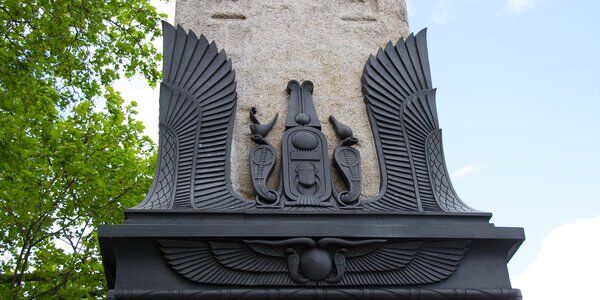
Being Transported from Alexandria
Despite the polite thank-you note from Prime Minister Lord Liverpool, the British did what any overwhelmed gift recipient might do—they left it exactly where it was, buried in the Egyptian dust, for over 50 years.
But enter stage right: General Sir James Edward Alexander, a Scottish adventurer with a stiff upper lip and a burning desire to outdo the French. While on a jaunt to Paris in 1867, he saw the French showing off their own shiny Cleopatra’s Needle from Luxor, proudly standing in the Place de la Concorde. That was all the motivation he needed—if the French had one, then by Jove, so should London!
A meeting with Egypt’s Khedive, Isma’il Pasha, sealed the deal. The country was up to its eyeballs in debt and not in a great position to say no. The green light was given, and now all Alexander had to do was figure out how to drag a 224-ton slab of ancient stone across the sea.
Luckily, he had a wealthy friend: Sir William James Erasmus Wilson—a man as passionate about dermatology as he was about dynasties. Wilson coughed up £10,000 (that’s the rough equivalent of a million pounds today), and the mission to move Cleopatra’s Needle to London finally left the drawing board.
The Voyage of Cleopatra’s Needle London
The Cleopatra: An Iron Sausage
So how exactly do you ship a 224-ton monument without breaking it—or sinking everything in sight? Enter Mathew William Simpson, a railway engineer and self-declared Egypt enthusiast, who came up with a brilliantly bonkers idea: build a giant iron sausage, pop the obelisk inside, and float it to England.
The resulting vessel—a 92-foot-long, 16-foot-wide iron cylinder—was assembled in pieces at the Thames Iron Works, shipped out to Egypt, and fitted snugly around Cleopatra’s Needle like a metallic burrito. The floating contraption was christened the Cleopatra. It had a rudder, masts, bilge keels, and a little cabin for the crew and was to be towed by a steamship called the Olga, commanded by one Captain Booth.
Setting Sail for London
The ship set off from Alexandria in 1877, and everything was going swimmingly—until they hit the Bay of Biscay, known for its rough seas and tantrum-level weather. Sure enough, a violent storm exploded around the Cleopatra and Olga.
Captain Booth, fearing both vessels would be dragged to the bottom of the ocean, decided to evacuate the Cleopatra. He sent a smaller boat with six volunteers to rescue its crew, but tragedy struck—the rescue boat capsized, and all six men drowned.
Eventually, Booth managed to haul the five men remaining on the Cleopatra aboard the Olga and—heart sinking—cut the towing cables. Everyone assumed the Cleopatra, and the priceless granite needle entombed inside, had been claimed by the sea.
Claimed by Spain
But Cleopatra's Needle wasn’t finished with the world just yet. Miraculously, it didn’t sink. Five days later, it was spotted bobbing about by Spanish fishing boats like an ancient message in a bottle.
A Glasgow steamer called the Fitzmaurice towed the battered Cleopatra to the Spanish port of Ferrol for some much-needed TLC. The salvage claim almost cost the Brits another £5,000, but a deal was struck, and soon enough the Cleopatra was sea-worthy again.
The final leg of the journey saw the paddle tug Anglia, captained by David Glue, tow the Cleopatra across the English Channel and up the Thames.
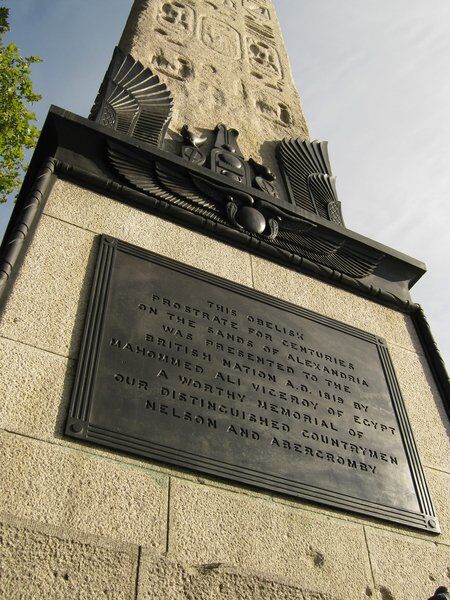
Erecting the Needle in London
On 21st January 1878, Cleopatra’s Needle finally arrived in England—probably quite fed up with the whole experience. Gravesend schoolchildren were even given the day off to witness the peculiar sight of a giant iron cigar cruising up the Thames.
At first, there was some indecision over where to actually put the thing. A wooden mock-up had been plonked outside the Houses of Parliament, but it didn’t get the thumbs-up. Eventually, someone pointed to a spot on the Victoria Embankment, just by the Thames, and said, “That’ll do.” And so it did.
On 12th September 1878, the obelisk was hoisted upright at last, flanked by two faux-Egyptian sphinxes and topped with a time capsule containing coins, toys, rail guides, a razor, a Bible, a portrait of Queen Victoria, and—no joke—12 portraits of attractive women, apparently handpicked by the ship’s commander. (Sir, what were you doing?)
Cleopatra’s Needle London had finally reached its second home after nearly sixty years of dithering, disaster, and dedication. Standing proudly by the river, it remains one of London’s quirkiest—and most tenacious—monuments.
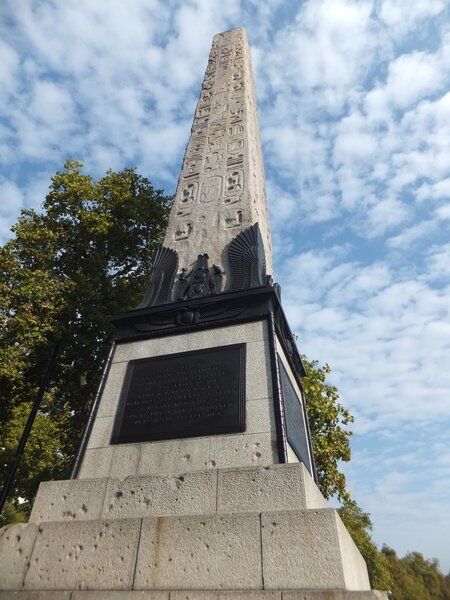
The Spooky Side of Cleopatra’s Needle
So now we’re done with how and why Cleopatra’s Needle came to London, let’s take a look at what happened once it arrived. We’re talking creepy legends, eerie alignments, and time-traveling Victorians who apparently didn’t shy away from adding a few cursed extras for good measure.
Myths, Madness, and Ghosts
Okay, so let’s start with the weird stuff.
Back in the day (1890s-ish), ghost-chronicler Elliott O’Donnell claimed that the waters near the obelisk were oozing with ghostly energy. Homeless folks around the area reportedly avoided the Needle like the plague, sharing tales of shadowy, human-but-not-quite-human figures emerging from the mist.
One particularly memorable spirit was a tall, scaled creature with a pyramid-shaped head that supposedly waved at passersby before swan-diving into the river.
Some even say you can hear unearthly shrieking and malicious cackling near the monument at night—possibly from the ghosts of sailors who died while transporting the obelisk. (You’ll find a dedication to those men etched into the pedestal if you want to pay your respects... or make peace.)
And then there’s the infamous tale of the diving man. According to London lore, police were twice approached by a distressed woman reporting someone about to jump into the Thames. Both times, when the officers rushed over, the woman was the jumper. Same face, same voice. Doppelgänger ghost? A cursed loop? No one knows.
The Sphinxes are Facing the Wrong Way?!
Let’s talk about the sphinxes. The two bronze feline bodyguards on either side of Cleopatra’s Needle are supposed to protect the obelisk, right? That’s what sphinxes do in Egypt—gaze outward to keep the baddies at bay. But in London? They face inward.
Some believe this isn’t just an architectural hiccup. According to city folklore, they’re turned inwards on purpose—to contain the monument’s supposed occult power. Others say it’s a mistake that’s only added fuel to the mystical mayhem. Whatever the case, if they were meant to stop curses and creepy spirits, spoiler alert: they failed.
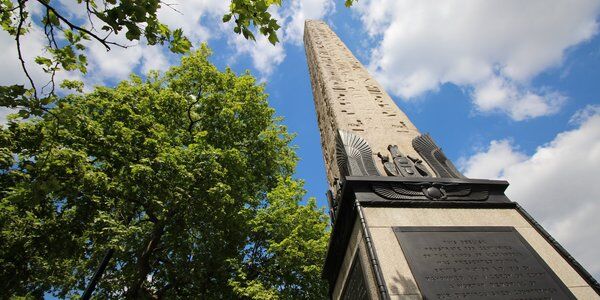
Aleister Crowley, Ramses II, and One Very Weird Ritual
If things weren’t already bizarre enough, enter Aleister Crowley—infamous magician, occultist, and general Edwardian chaos agent. Legend has it that Crowley tried to perform a ritual right by the Needle to release the spirit of Ramses II, which he believed was trapped inside the granite.
This involved blood, bones, and (allegedly) feeding a skeleton. Questions remain—like how did he even get a skeleton through central London without raising eyebrows? And how do you even feed a skeleton?—but the ritual supposedly failed. Ever since, eerie laughter (presumably from a grumpy ghost-pharaoh) has echoed through the Embankment at night.
That Time the Needle Was Blamed for Jack the Ripper
Some modern mythmakers have even suggested that the energy from Cleopatra’s Needle—particularly from the time capsule buried beneath it—might have had a… motivating effect on a certain infamous serial killer.
Yes, we’re talking about Jack the Ripper. Some say the items sealed in the capsule formed an occult offering that spread malevolent vibes across Victorian London. In Alan Moore’s graphic novel From Hell, the Needle is portrayed as part of a magical grid of power, used by the Ripper (a high-ranking Freemason, in the story) to summon dark energy.
Real? Probably not. Fascinating? Absolutely.
Devish Designs: Pyramids and Pentagrams
Psychogeographers have spent years trying to “decode” London’s layout—and Cleopatra’s Needle is often right at the center of their strange diagrams. Iain Sinclair, in particular, described it as part of an invisible triangle of ancient energy along with weirdly designed churches, forgotten burial sites, and so-called suicide ponds.
Some conspiracy theorists go one better and say if you connect these sites on a map, you get a pentagram—or the Eye of Horus. Spooky geometry aside, the Needle seems to attract more than its fair share of mystical attention.
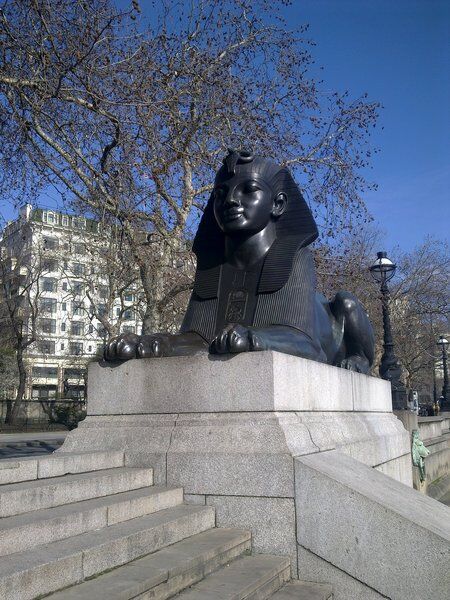
The Features of Cleopatra’s Needle London
Now, back to the facts (sort of). Cleopatra’s Needle is over 3,500 years old, crafted from red granite and standing tall at around 68 feet (21 meters). The hieroglyphics celebrate military victories and sun gods—classic ancient Egyptian flexes.
In 1917, during a World War I bombing raid, a German bomb exploded near the Needle, leaving visible damage on one of the sphinx pedestals. Rather than patch it up, city officials decided to leave it as a scar—a reminder of the monument’s resilience and the strange, violent history that surrounds it.
Then in 2005, a careful restoration effort cleaned up the obelisk and its surroundings (don’t worry—the creepy bits remained untouched). Today, it stands tall beside the Thames, continuing to draw tourists, joggers, ghost hunters, and the occasional occult enthusiast.
Cleopatra’s Needle in New York
Perched quietly behind the Met on Greywacke Knoll, Cleopatra’s Needle New York is the oldest manmade object in NYC—and arguably the most unexpected.
Gifted to the U.S. after the opening of the Suez Canal, London Needle’s twin was hauled across the globe by a Freemason Civil War vet, funded by railroad tycoon William Vanderbilt (because Congress wouldn’t pay), and transported through Manhattan using cannonballs, 32 horses, and no shortage of Victorian flair.
Its 1881 arrival was marked by a parade of 10,000 Freemasons, grain-and-wine blessings, and mystical speeches. Today, it quietly towers above the squirrels and tourists of Central Park.
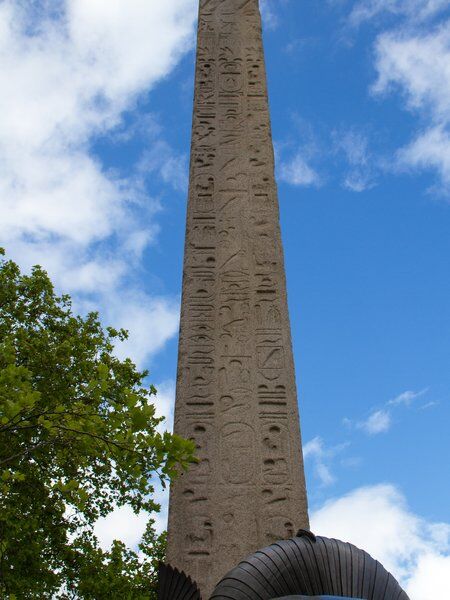
Visiting Cleopatra’s Needle London
So, where exactly is this ancient Egyptian giant needle hiding in London’s busy sprawl of glass towers and red buses? Just hop off the tube at Embankment Station, take a breezy stroll east along the Thames, and voilà! There it stands on Victoria Embankment, looking thoroughly out of place and perfectly fabulous between the Golden Jubilee Bridges and Waterloo Bridge.
Cleopatra’s Needle is free to visit and on public display 24/7—perfect for early risers, night owls, and anyone with a burning desire to stand next to a 69-foot-tall symbol of imperial power.
What Else is Nearby?
Done marvelling at the obelisk? No need to pack up your adventuring hat just yet – there’s plenty more to see nearby.
Swing by Somerset House for some culture, Covent Garden for boutique browsing and market munchies, or Trafalgar Square to gaze up at Nelson’s Column (yes, that Nelson, the one mentioned on the Needle’s base) and explore the National Gallery.
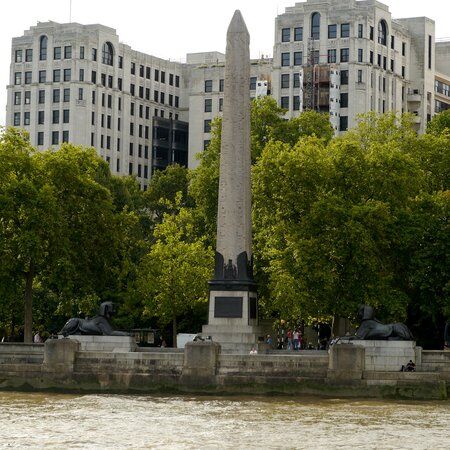
Explore Beyond Cleopatra’s Needle London with CityDays
So, you’ve conquered Cleopatra’s Needle London, read every plaque, posed with a sphinx, and dodged any curses—what’s next? Well, if you’re itching to keep the adventure going, it’s time to swap ancient obelisks for modern-day mysteries with CityDays!
We run awesome scavenger and treasure hunt tours all over London—and even worldwide—perfect for teams, friends, or anyone up for some serious fun and friendly competition.
These tours are a fantastic way to explore the city’s secret corners, solve puzzles, and bond over shared adventures. Whether it’s for team-building exercises or just a day out with friends, our hunts turn sightseeing into a game you won’t forget.
Ready to explore? Let’s make your next trip to London (and beyond) a memorable one, full of mystery, history, and a whole lot of laughs.
